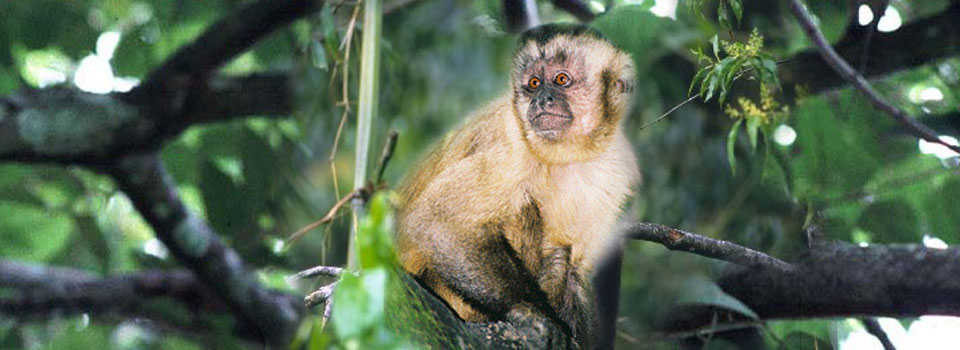When Tchaikovsky penned The Nutcracker, the last thing he probably had in mind was a capuchin monkey. And yet new research, co-directed by a researcher at the University of Georgia, is changing our view about which nutcracker should be the focus of our attention.
In research just published in the journal Current Biology, Dorothy Fragaszy and her colleagues show for the first time that wild bearded capuchin monkeys actually choose the most effective stone to crack hard palm nuts, a part of their natural diet.
The research at a site in Brazil is changing how science looks at tool use among primates and is the first report that capuchins don’t just use tools-they pick the right ones for the job.
“One of the important messages of this research is that we can take experiments into the field under limited conditions, and animals will come regularly to a place and, if given tasks to perform, they will participate,” said Fragaszy, a psychologist and chair of the Neuroscience and Behavior Program.
Senior author on the paper was Elisabetta Visalberghi of the Institute of Science and Technology of Cognitive Sciences and Technologies of the National Research Council in Rome. Other authors include Elsa Addessi, Valentine Truppa and Noemi Spagnoletti, also of ISTC; Eduardo Ottoni and Patricia Izar the University of São Paulo; and Fragazy, whose department at UGA is part of the Franklin College of Arts and Sciences.
The new research shows that these monkeys don’t just use tools: they actually select the right tool for the size palm nut they need to crack. That decision is based on numerous variables, including the mineral composition of the stone, which affects its susceptibility to fracturing when it hits the hard nut, and its weight. Even when the heavier stone was of smaller volume than the lighter stone, the monkeys chose the heavier stone. And even younger monkeys selected stones very carefully.
However, although the monkeys select stones carefully, proficiency at cracking differs enormously across the group of monkeys.
“We put stones of various sizes and shapes out where the monkeys could use them as nutcrackers,” said Fragaszy, “and we found that both size and expertise contribute to proficiency. The monkeys who were older and larger and had been cracking nuts for a long time were better at cracking.”
Even the youngest novice, however, was able to choose the best tool offered, an astonishing fact, considering that scientists didn’t even know these animals used tools until a few years ago.
While the work on tool selection is an important component of the study, the scope has broadened greatly since 2003 and continues to expand, said Fragaszy. Such areas as kinematics (the science of movement) and the social context of nut-cracking await further study.
The new work is also giving scientists new insights into the differences in experimental work between captive and wild capuchins. Since capuchin monkeys in the wild have a lifespan of around 30 years, the work will happily go on for a long time to come.
